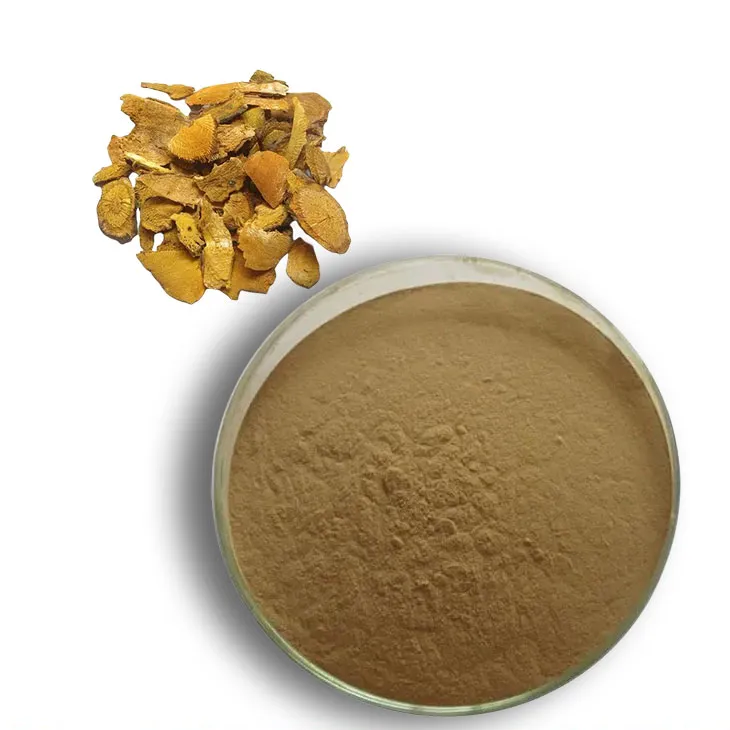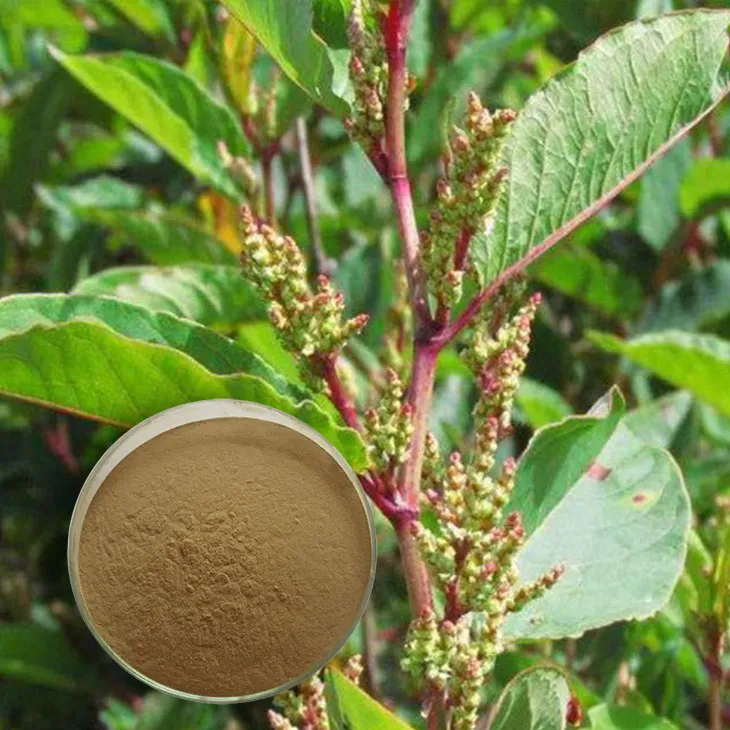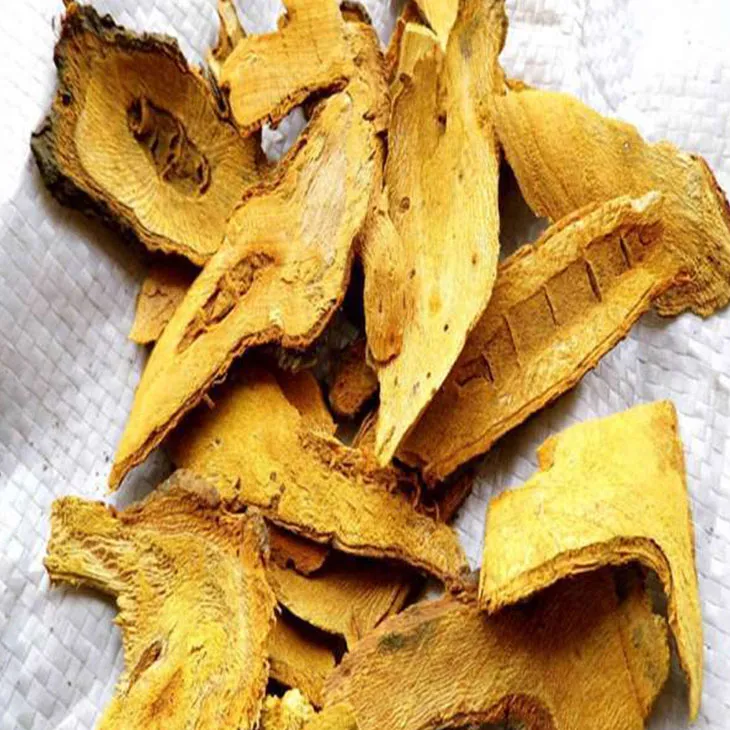- 0086-571-85302990
- sales@greenskybio.com
The process of extracting physcion from polygonum cuspidatum extract.
2024-11-26

1. Introduction to Polygonum cuspidatum and Physcion
Polygonum cuspidatum, also known as Japanese knotweed, is a plant with rich chemical composition. It has been widely studied in the field of natural products due to its potential health benefits. Physcion is one of the important components in Polygonum cuspidatum. It is a type of anthraquinone derivative and has shown various biological activities, such as antioxidant, anti - inflammatory, and anticancer properties.

2. Preparation of Polygonum Cuspidatum Extract
2.1 Selection of Raw Materials
The quality of the raw materials, i.e., Polygonum cuspidatum, is crucial for the extraction process. High - quality plants should be selected, preferably those grown in a clean and unpolluted environment. The parts of the plant used for extraction also need to be carefully considered. Usually, the roots, rhizomes, or stems of Polygonum cuspidatum are the main parts for extraction as they contain relatively high amounts of the target components.2.2 Pretreatment of Raw Materials
Before extraction, the raw materials need to be pretreated. This may include steps such as cleaning to remove dirt, debris, and other impurities. Then, the materials are usually dried to a certain moisture content. Drying can be carried out using natural drying methods such as air - drying in a well - ventilated place or using artificial drying methods such as drying ovens at a controlled temperature. After drying, the materials may be crushed or ground into a suitable particle size. This can increase the surface area of the raw materials, which is beneficial for the subsequent extraction process.2.3 Selection of Solvents
The choice of solvents is a critical factor in the extraction of Polygonum Cuspidatum Extract. Different solvents have different solubility for various components in the plant. Commonly used solvents include ethanol, methanol, ethyl acetate, and chloroform. Ethanol is a popular choice due to its relatively high solubility for many active components in Polygonum cuspidatum, as well as its relatively low toxicity and wide availability. The concentration of the solvent also affects the extraction efficiency. For example, in the case of ethanol, different concentrations such as 50%, 70%, or 95% can be used depending on the specific requirements of the extraction.2.4 Extraction Process
There are several extraction methods available. One of the most common methods is the maceration method. In this method, the pretreated Polygonum cuspidatum materials are immersed in the selected solvent for a certain period of time, usually several days to weeks. During this time, the solvent penetrates into the plant materials and dissolves the target components. Another method is the soxhlet extraction method. This method uses a Soxhlet extractor, which continuously circulates the solvent through the plant materials. It is a more efficient extraction method compared to maceration, especially for components that are difficult to extract. After the extraction process is completed, the resulting solution is filtered to remove the solid residues, obtaining the Polygonum Cuspidatum Extract.
3. Extraction of Physcion from Polygonum cuspidatum Extract
3.1 Preparative Thin - Layer Chromatography (PTLC)
PTLC is a useful technique for the separation and extraction of physcion from Polygonum cuspidatum extract.- Firstly, a suitable thin - layer chromatography plate is selected. The plate is usually coated with a stationary phase such as silica gel.
- Then, the Polygonum cuspidatum extract is spotted onto the plate near the bottom. The sample should be applied as a small, concentrated spot.
- Next, a developing solvent is used to run the chromatogram. The choice of the developing solvent is crucial as it determines the separation of different components. For physcion extraction, a solvent system such as a mixture of chloroform - methanol - acetic acid may be used.
- After the development is complete, the plate is dried. The physcion spot can be visualized under ultraviolet light or by using a suitable staining reagent. The physcion - containing zone on the plate can then be scraped off carefully.
- Finally, the scraped silica gel containing physcion is eluted with a suitable solvent, such as methanol, to obtain the physcion extract.
3.2 Counter - Current Chromatography (CCC)
CCC is another advanced separation technique for physcion extraction.- For CCC, a two - phase solvent system needs to be selected. The two phases should have different polarities, and one phase should be able to dissolve physcion effectively. For example, a biphasic system of n - hexane - ethyl acetate - methanol - water can be used.
- The Polygonum cuspidatum extract is dissolved in one of the phases and then injected into the CCC instrument.
- The CCC instrument rotates the column, and the two phases are continuously mixed and separated. Physcion migrates in the column according to its partition coefficient between the two phases.
- The fractions containing physcion are collected and further purified if necessary.

4. Purification and Characterization of Physcion
4.1 Purification
After the extraction of physcion, further purification may be required to obtain a high - purity product. This can be achieved through techniques such as recrystallization. In recrystallization, physcion is dissolved in a suitable solvent at a high temperature, and then the solution is slowly cooled. As the temperature decreases, pure physcion crystals precipitate out, while impurities remain in the solution. Another purification method is column chromatography, which can further separate any remaining impurities from physcion.4.2 Characterization
To confirm the identity and purity of the extracted physcion, various characterization techniques are used. Spectroscopic methods such as ultraviolet - visible spectroscopy (UV - Vis), infrared spectroscopy (IR), and nuclear magnetic resonance spectroscopy (NMR) are commonly employed. UV - Vis spectroscopy can provide information about the absorption characteristics of physcion, which is related to its chemical structure. IR spectroscopy can detect the functional groups present in physcion. NMR spectroscopy is a powerful tool for determining the detailed molecular structure of physcion, including the connectivity of atoms and the stereochemistry. In addition, mass spectrometry (MS) can be used to determine the molecular weight of physcion and its fragmentation pattern, which is also helpful for identification and purity assessment.5. Significance of Physcion Extraction from Polygonum cuspidatum
5.1 Medicinal Value
As mentioned earlier, physcion has shown potential medicinal properties. Extracting physcion from Polygonum cuspidatum can provide a natural source for the development of new drugs. For example, its antioxidant property can be used to prevent oxidative stress - related diseases such as cardiovascular diseases and neurodegenerative diseases. Its anti - inflammatory activity may be beneficial for treating inflammatory conditions such as arthritis. And its anticancer potential makes it a candidate for cancer research and the development of new anticancer drugs.5.2 Cosmetic Application
Physcion can also be used in the cosmetic industry. Its antioxidant property can help protect the skin from free - radical damage, which is associated with skin aging. It can be incorporated into skin care products such as creams, lotions, and serums to improve skin health and appearance.5.3 Contribution to Natural Product Research
The extraction process of physcion from Polygonum cuspidatum contributes to the overall understanding of natural products. It helps in exploring the chemical composition of Polygonum cuspidatum and the potential of other components in the plant. This knowledge can be extended to the study of other plants with similar chemical constituents, promoting the development of natural product research.6. Conclusion
The process of extracting physcion from Polygonum cuspidatum extract involves multiple steps, from the preparation of the plant extract to the specific extraction and purification of physcion. Each step requires careful consideration of factors such as raw material quality, solvent selection, and separation techniques. The extraction of physcion is not only important for obtaining a valuable natural product with potential medicinal and cosmetic applications but also contributes to the broader field of natural product research. Future research may focus on further optimizing the extraction process, exploring new applications of physcion, and studying the interaction of physcion with other components in Polygonum cuspidatum and in biological systems.
FAQ:
What are the common solvents used in extracting useful components from Polygonum cuspidatum?
Common solvents may include ethanol, methanol, etc. These solvents are often chosen because they can effectively dissolve the various substances present in Polygonum cuspidatum, allowing for the extraction of useful components to form the extract.
Why are preparative thin - layer chromatography and counter - current chromatography suitable for extracting physcion from the extract?
Preparative thin - layer chromatography is suitable because it can separate components based on their different affinities for the stationary and mobile phases on a thin layer. Counter - current chromatography, on the other hand, utilizes the differential partitioning of components between two immiscible liquid phases. Both techniques can effectively isolate physcion from the complex mixture in the Polygonum cuspidatum extract.
What are the potential values of Polygonum cuspidatum - related products?
The potential values are diverse. For example, they may have medicinal value such as antioxidant, anti - inflammatory, or anti - cancer properties. They may also be used in the cosmetic industry for their potential beneficial effects on the skin. Additionally, they could be explored for their role in promoting plant growth if used in agriculture - related products.
How can one ensure the purity of the physcion extracted from Polygonum cuspidatum?
To ensure purity, multiple purification steps can be carried out. After the initial separation using techniques like preparative thin - layer chromatography or counter - current chromatography, further purification methods such as recrystallization may be employed. Analytical techniques like high - performance liquid chromatography (HPLC) can be used to monitor and confirm the purity of the physcion.
Are there any environmental considerations in the process of extracting physcion from Polygonum cuspidatum?
Yes, there are. The solvents used in the extraction process need to be disposed of properly to avoid environmental pollution. If large - scale extraction is carried out, the source of Polygonum cuspidatum should also be sustainable to ensure that the plant population is not over - exploited, which could have an impact on the local ecosystem.
Related literature
- Extraction and Isolation of Bioactive Compounds from Polygonum cuspidatum"
- "Physcion: A Promising Compound from Polygonum cuspidatum - Extraction and Characterization"
- "Advanced Separation Techniques for Extracting Compounds from Polygonum cuspidatum"
- ▶ Hesperidin
- ▶ Citrus Bioflavonoids
- ▶ Plant Extract
- ▶ lycopene
- ▶ Diosmin
- ▶ Grape seed extract
- ▶ Sea buckthorn Juice Powder
- ▶ Fruit Juice Powder
- ▶ Hops Extract
- ▶ Artichoke Extract
- ▶ Mushroom extract
- ▶ Astaxanthin
- ▶ Green Tea Extract
- ▶ Curcumin
- ▶ Horse Chestnut Extract
- ▶ Other Product
- ▶ Boswellia Serrata Extract
- ▶ Resveratrol
- ▶ Marigold Extract
- ▶ Grape Leaf Extract
- ▶ New Product
- ▶ Aminolevulinic acid
- ▶ Cranberry Extract
- ▶ Red Yeast Rice
- ▶ Red Wine Extract
-
Hericium erinaceus extract powder
2024-11-26
-
Okra Extract
2024-11-26
-
Cassia Seed Extract
2024-11-26
-
Panax Ginseng Leaf Extract
2024-11-26
-
Ginseng Root Extract
2024-11-26
-
Avocado Extract Powder
2024-11-26
-
Eucommia Ulmoides Extract
2024-11-26
-
Andrographis Paniculata Extract Powder
2024-11-26
-
Polygonum Cuspidatum Extract
2024-11-26
-
Aminolevulinic acid
2024-11-26




















